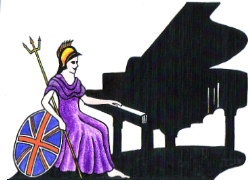Teachers, Accompanists and Piano Entertainers in the UK

UK Piano Page

45 Rosemount Viaduct
Rosemount
Aberdeen, Aberdeenshire AB251NQ
Scotland
Kemble Centre of Excellence other leading brands
98 Canongate
The Royal Mile
City of Edinburgh, Edinburgh EH8 8DD
Scotland
For over 40 years we have been known as Edinburgh
137A Grays Inn Road .
Bloomsbury, London WC1X 8TU
England
Peregrine's Pianos is the exclusive dealer in
Knightley Farm Workshop
Callingwood
Burton-on-Trent, Staffordshire DE13 9PU
England
Drayton Mill
Stourbridge, Worcestershire DY9 0BT
England
Broughton Pianos have been trading for over 30
Music Festival for performers and guests Our 10th
18-06-2022 12:30PM
The Morecambe Bay Piano Group was set up to extend
11-12-2021 01:00PM
The Morecambe Bay Piano Group was set up to extend
08-01-2022 01:00PM
The Morecambe Bay Piano Group was set up to extend
12-02-2022 01:00PM